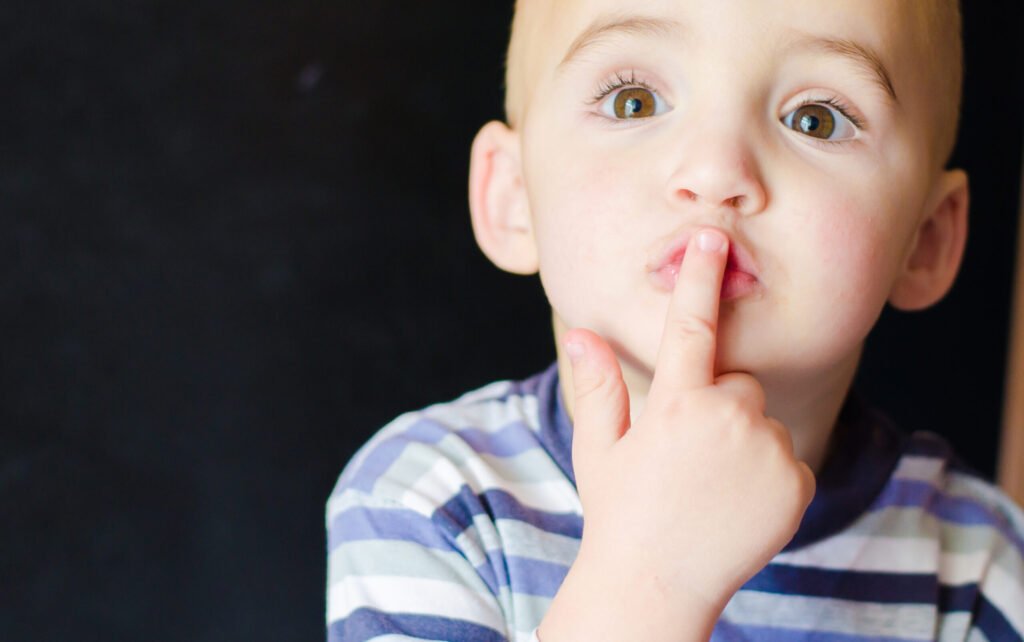Language not only describes reality, but is also capable of creating it.
(Alonso Puig, M.)
When we talk about a non-verbal child we understand that it can be a child who makes sounds, even says a few words, but in which the functionality of your language does not exist. We can even say that it is not spontaneous, much less social, in terms of the use of words to demand, communicate, ask for attention, answer questions, or have a conversation. This scenario is just the tip of a large iceberg, a reality where beneath it we find problems of sensory integration, of communication and finally, of emotional health.
We know that sensory aspects affect communication, but also a nonverbal child's behavior, attention, and perception of the world. Obviously, this situation affects the child's emotions and those around them.
What characteristics does a nonverbal child have?
Generally, we find children who not only have verbal difficulties, but also of eye contact, of motivation to get things done, restricted interests and lack of attentionWe also know that symbolic play—that is, imagining or simulating a game situation, such as feeding a stuffed animal or putting a doll to sleep—is very difficult to develop.
We can also observe the presence of stereotypies: repetitive or ritualized movements, postures, or voices without a specific purpose. They range from the simplest to the most complex: body swaying, flapping, clapping, rubbing hands, skipping, tiptoeing, walking in a pattern, spinning objects, etc.
Your children may have one or more of these characteristics. These signs tell us we need to act quickly because early intervention is what will give us success in the future, helping our children as soon as possible.
Family and work in natural contexts in the non-verbal child
Family is not something important, it is everything
In non-verbal children, family formation It is the first step, even before working with the child. By empowering the family with specific knowledge, We increase their level of confidence and, therefore, reduce their anxiety, achieving a very positive and encouraging change in attitude. In this sense, the focus on change stems from working in natural contexts with the full involvement of the family, therapy teams, the school environment, and, in short, everything that surrounds the child's life.
Working in natural settings and training the family allows us to extend our work with the child over a full period of time and to work with situations wherever they occur. We can work on a situation in the laboratory a thousand times until we get it right, but when we implement it in a natural setting, we're unable to replicate what we did so well in a controlled environment. Or simply, there were factors we hadn't considered before.
The greatest challenge in intervening with nonverbal children is being able to evolve to adapt to each natural context. There are no magic formulas; there's passion, enthusiasm, creativity, affection, hard study, and, above all, always believing in these children's abilities. And believing in something generally makes it possible.
This does not mean that the family is “The therapist of the non-verbal child”, but rather that they have enough knowledge to be able to adequately deal with everyday situations and that the interaction with professionals will always be richer and more fluid.
This family formation is something we have fostered since our roots in the VICON Method. The beginning of any Intervention Program is based on the activities of daily living, focused on giving autonomy to the childStrengthening a child's independence and their ability to function in everyday life is our primary goal, and it should also be the goal of families. This independence should be achieved in both basic and instrumental activities, educational activities, play, time management, and social interaction. These are what increase a child's confidence and boost their overall development. To achieve this, a program is designed to foster a child's independence. program to increase the child's functional communication consisting of 3 points:
- That the child effectively understands what is expected of him
- Let him know that others understand his requests
- May your interaction with everything that happens around you be effective
Play, play, play
Playing is not a break from learning, it is endless, delightful, deep, engaging and practical learning because it is the gateway to the child's heart (Gowmon, V.)
I want you to take all the suggestions for stimulating language in nonverbal children that you'll find in the following blog posts as playfully as possible. I know the path to language development is complicated, and as parents, it causes us incredible stress to see the days go by and not achieve that essential goal that helps our children approach the world and life in a very different way.
All my proposals are aimed at achieving this. But often it's not the goal but the way we walk that makes the difference in what we're going to achieve, and this way of walking has to be led by fun, there is no other way. So you have to find a way to adapt all these ideas that you will find in the successive blog posts so that they are attractive to your children; because if you can't hook them, they'll probably be of no use.
So I ask that you put aside all the anxiety that comes with seriousness, demands, and constant requests, and that you take the initiative to stand by your child's side. Accompanying him with your eyes wide open and taking in everything he gives us. Keeping these ideas in mind, but without forgetting that he or she will mark the path and the way for us, and that there is no other way but through him. play and enjoyment, fun and emotions. Not only will it help your children, but it will also help you with much more effective positioning.

